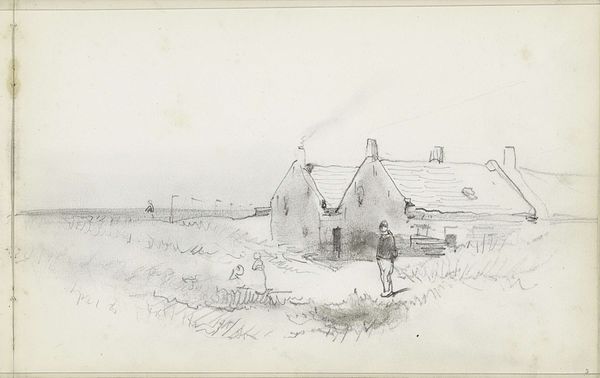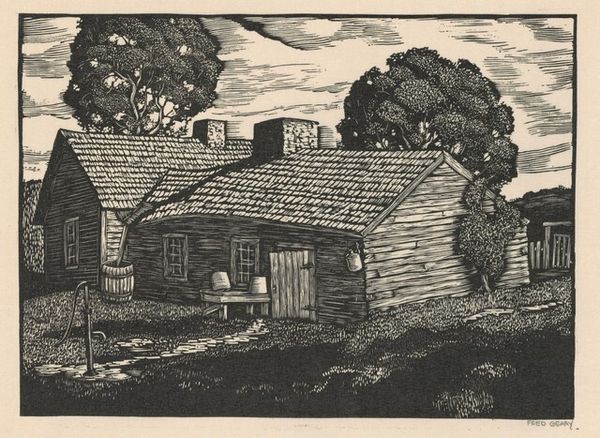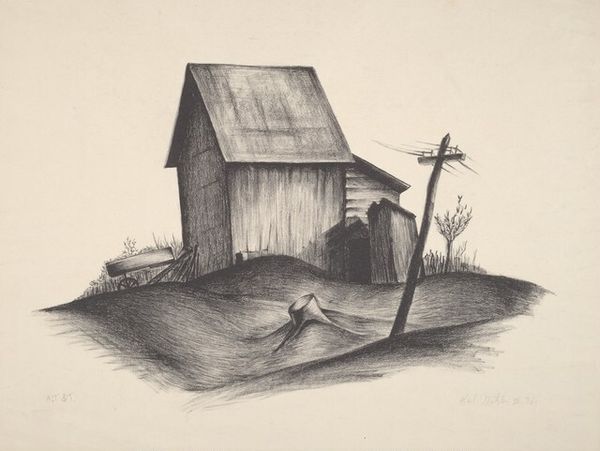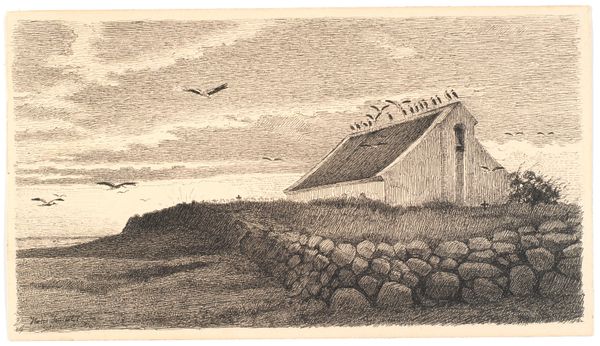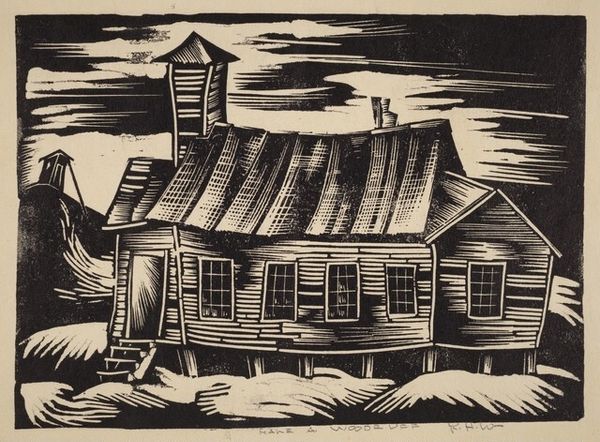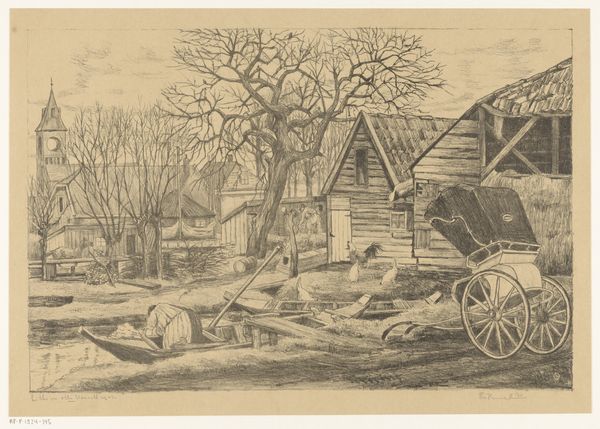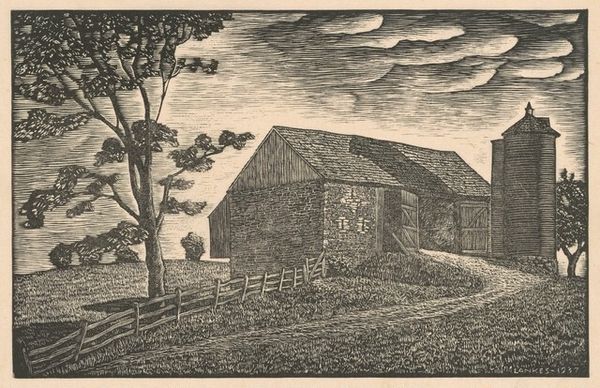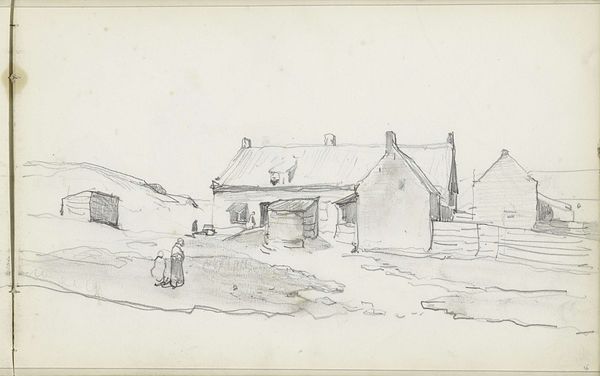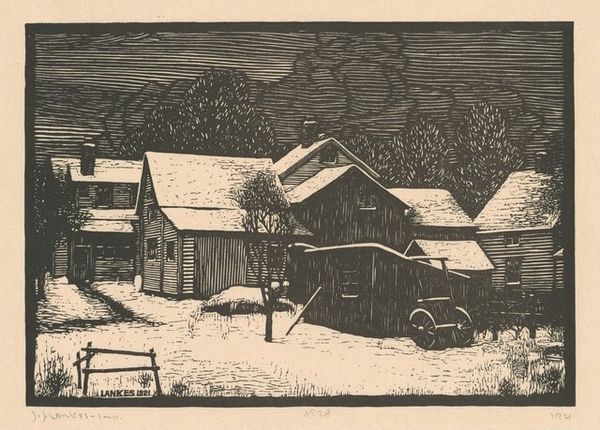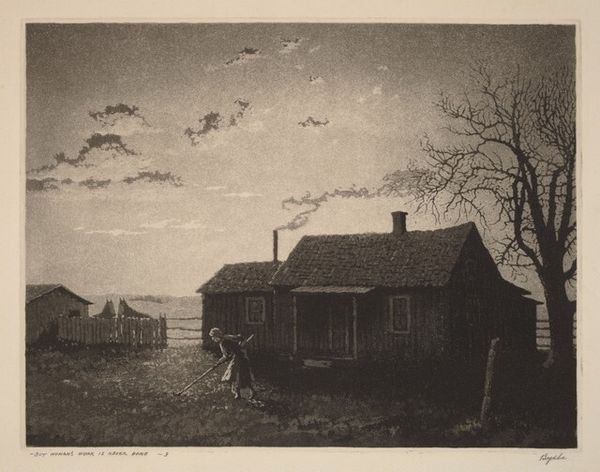
drawing, print, pencil
#
drawing
# print
#
pencil sketch
#
landscape
#
pencil
#
regionalism
#
realism
Dimensions: Image: 229 x 191 mm Sheet: 381 x 305 mm
Copyright: National Gallery of Art: CC0 1.0
Editor: This is Jerry Bywaters's 1938 print, "Bone Yard," a study in pencil, portraying what seems like an abandoned homestead. The mood is quite somber, a landscape of dereliction. What strikes you most about this piece? Curator: I see a stark commentary on the socio-economic landscape of the Depression era, particularly in the Southwest. Consider the title, "Bone Yard". This isn't just about old cars; it's about the bones of broken dreams, failed agricultural policies, and a forgotten segment of the population. Who do you think inhabited this space? Editor: It's difficult to say definitively, but the abandoned house and vehicles certainly evoke a sense of hardship and abandonment, a silent narrative of people driven away. I wonder if the vehicles themselves hold symbolism? Curator: Absolutely. Cars represent mobility, freedom, and the American Dream. Their decay here speaks volumes about the accessibility of that dream for certain communities. Were these promises broken along lines of class or race, leaving behind these material remnants of aspiration? Also note the Regionalist style--it speaks directly to lived experience and offers pointed social critiques. Editor: The regionalist aspect definitely underscores a focus on the everyday lives of the dispossessed. How do the compositional choices contribute to this reading? Curator: Notice the house is off-center, almost overshadowed. The eye is drawn not to prosperity but to decay. Bywaters positions us not as detached observers, but witnesses implicated in the scene's unfolding drama. Do you think his artistic choices invite a particular emotional response from the viewer? Editor: I think the composition emphasizes a feeling of unease and social disruption, like an elegy for the forgotten. Curator: Precisely. Through art like this, we begin to address the complexities of history, not just as dates and events, but as human experiences shaped by power and inequality. Editor: Thank you. I am leaving this conversation with much to ponder about Bywaters’s intentions and cultural context. Curator: Indeed, art serves as a tool, encouraging dialogue and action. It gives us the opportunity to delve into society, and, importantly, ask difficult questions.
Comments
No comments
Be the first to comment and join the conversation on the ultimate creative platform.
